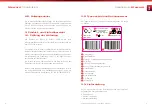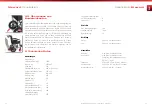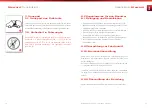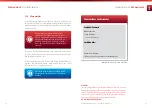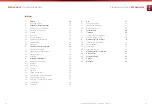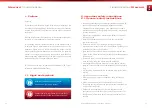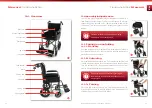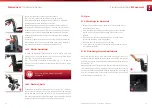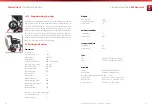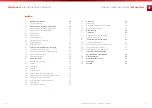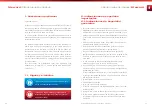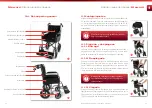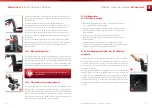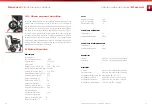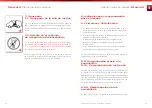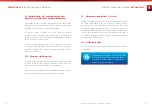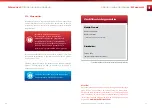
Bischoff & Bischoff GmbH | 16.01.2020 - Revision: 1
EN
37
36
Steward
| Transit wheelchair
Transit wheelchair |
Steward
Loosen the locknut at the top of the brake handle
(Fig. 14, arrow) so that the adjusting nut can be rotated.
Now rotate the wide adjusting nut further out or in to increase or
reduce the brake effect. Retighten the locknut.
Further adjustments can be also be carried out on the locknut at
the bottom of the fixed wheels (Fig. 15). Here too, the first step is to
loosen the hexagonal locknut. Then rotate the adjusting screw anti-
clockwise to reduce the distance between the brake block and the
wheel, thereby positioning the brake more securely. Then retighten
the locknut.
If necessary, repeat the procedure on the other side. Both sides must
have the same power. To position the brake more loosely, proceed in
the same way but rotate the adjusting screw clockwise.
4.5. Push handles
To store the wheelchair conveniently in a small space, both push
handles can be folded downwards. To do this, push both black plastic
levers (Fig. 16) forwards at the same time
(Fig. 16) and allow the handles to lower down (Fig. 17). To fold up,
raise both handles upwards until they automatically engage with a
clicking sound.
4.6. Safety belt
If required, a safety belt is available as an accessory. This is fitted on
the side frame of the wheelchair. Take the open end of the belt once
around the side frame tube and then fix it with the belt buckle. You
also use the belt buckle to adjust the length of the belt. Adjust the belt
length so that the belt is tight, but does not apply pressure.
5. Use
5.1. Getting in and out
•
Swivel the foot plates upwards, swivel the leg rests to the side or
remove them completely.
•
Move the Steward as close as possible to the current or intended
seat so that it is facing the seat and apply the brakes on the
Steward.
•
If you want to move from another wheelchair or indoor frame,
secure it by activating the locking brakes.
•
Now slide onto the seat with a turn of the body.
•
Finally, return the leg rests to their original position and swivel the
foot plates downwards
5.2. Pushing the wheelchair
Make sure that the person to be transported is sitting as far back in
the seat as possible. Movement and braking are achieved solely by an
assistant, who moves, steers and brakes the wheelchair using the push
handles (Fig. 18).
Wheelchairs have only limited anti-tip and anti-slip security. Particular
care is advised when braking, starting or turning on gradients. Leaning
out of the wheelchair to an extreme degree increases the risk of tipping
over. For increased safety, all wheelchairs can be fitted with a safety
belt (not fitted as standard) (Fig. 19).
15
16
17
14
Do not use the push handles to carry the
wheelchair!
19
18

